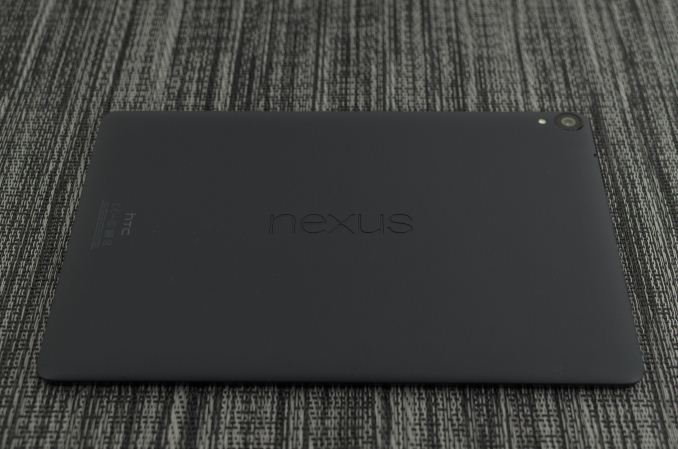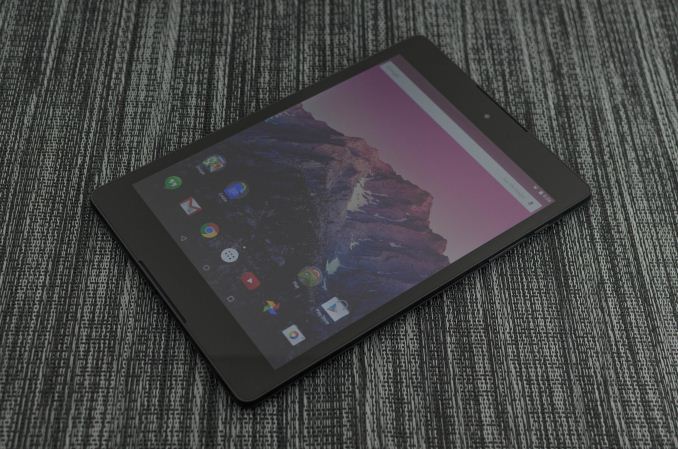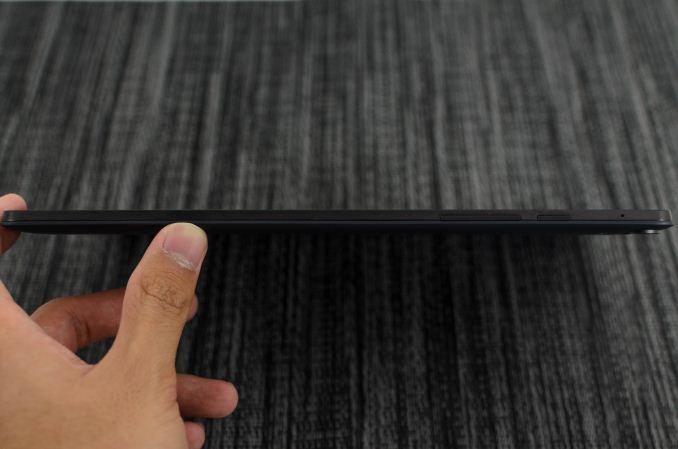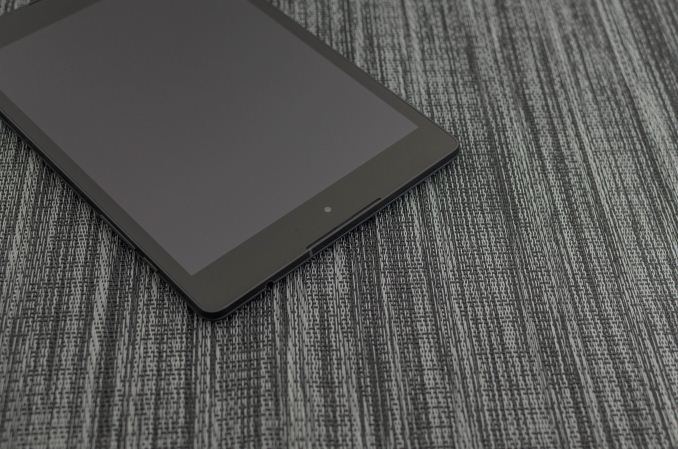Google Nexus 9: Preliminary Findings
by Joshua Ho on November 3, 2014 1:00 PM EST
For a few years now, Google has had a generally consistent tablet strategy. Instead of chasing after the ~10 inch tablet segment and focusing upon the high end, we’ve seen tablets closer to the ~7 inch display size at extremely low cost. While this has been an immensely successful strategy in driving hardware adoption, the formfactor made it possible for the tablet to be closer to a large phone than a small tablet. The flexibility of Android’s scaling system meant that an app designed for a phone worked acceptably well for a small tablet, even if the space efficiency was a bit poor. There’s no question that the Nexus 7 (2013) was and still is a great tablet, but even now it’s obvious that there’s a dearth of applications designed specifically for the larger display. The other issue is that of cost. With the Nexus 7 line, Google managed to integrate an incredible amount of hardware into a tablet priced well below the ~500 USD price point that the original iPad established. This is great for the consumer and no doubt great for Google, but the Nexus 7 line was good enough that there wasn’t much in the way of competition.
This brings us to the Nexus 9, Google’s attempt at changing the Android tablet space. From the start, this device seems to be intent on pushing the Android tablet to a more premium segment. Rather than a purely cost-optimized polymer design, we see the addition of an aluminum ring that runs around the side of the device, which definitely helps with in-hand feel. The tablet itself seems to have high-end aspirations as the launch platform for NVIDIA’s Tegra K1-64, which has two Denver CPU cores rather than the traditional 4+1 Cortex A15 setup, along with dual front-facing speakers and a large 9” display with 4:3 aspect ratio. I’ve included the basic specs in a spec sheet below, to avoid spending too much time going over the basics.
| Nexus 9 | |
| SoC | 2.3GHz 64-bit dual core Tegra K1 Denver SoC |
| RAM/NAND | 2GB LPDDR3 + 16/32GB NAND |
| Display | 8.9" 2048x1536 IPS LCD |
| Network | WiFi only or 2G / 3G / 4G LTE SKU |
| Dimensions | 153.68 x 228.25 x 7.95mm, 425g WiFi, 436g LTE |
| Camera | 8MP Rear Facing (IMX219) with F/2.4 aperture, 1.6MP FFC (OV9760) |
| Battery | 6700 mAh (25.46 Whr) |
| OS | Android 5.0 Lollipop |
| Connectivity | 802.11a/b/g/n/ac + BT 4.1, USB2.0, GPS/GNSS, NFC |
Unfortunately, in the case of the Nexus 9 while we can make some early observations the version of firmware that we received dates was built on August 29th, and in the time since it’s quite likely that there have been significant changes in all directions. We still don't have a newer build, so all the tests will be done on older firmware. The full review will have final numbers as it will be done using shipping firmware.
At any rate, the hardware of the Nexus 9 definitely fits the bill of a premium tablet. While for the most part every Nexus device in the past year has shared the same industrial and material design elements, HTC seems to have added a few extra touches to differentiate this product from other Nexus devices. The most obvious and prominent of these touches is the metal ring, which has a brushed texture similar to what we saw on the M8.
There are also dual front-facing speakers that flank the display, which are definitely great for video and music content when compared to a single speaker on the bottom or back of the device. However, for the most part the design is very much a Nexus device with its minimalistic design and soft-touch plastic back cover.













146 Comments
View All Comments
tipoo - Monday, November 3, 2014 - link
This has always been the way, never the first review out, but almost always the most in depth.esterhasz - Monday, November 3, 2014 - link
OK, preliminary numbers, no fast conclusions. But I can't help feeling that the shield tablet looks actually pretty attractive in that lineup.melgross - Monday, November 3, 2014 - link
I really had expected a typical full iPad Air2 review before this. I can't understand what's taking so long.It would be more interesting to see full reviews of both already. Include the latest Full sized Samsung model.
Krysto - Monday, November 3, 2014 - link
I wish Anandtech would stop focusing so much on Sunspider. Google said it 2-3 years ago that they aren't focusing Chrome on Sunspider performance anymore because it's a very simplistic test without much relation to real-world web app performance. They even did a 50xSunspider test to prove how hopefully obsolete it is, if some of you remember.The Basemark OS benchmarks are all over the place. In some it tests twice as good as the iPad, in others half as flow. I don't think Basemark OS has its algorithms well optimized, and it may give some subcomponents way more score than they deserve, or way too little in others - or Basemark OS may simply be acting weirdly with this new processor.
melgross - Monday, November 3, 2014 - link
Kraken seems to give the same relative performance results with the same ordering of devices, so it doesn't seem to make much difference which one they use.danbob999 - Monday, November 3, 2014 - link
javascript benchmarks are all useless to benchmark hardware. They were created to benchmark software (javascript engines)melgross - Monday, November 3, 2014 - link
It's not just benchmarks g hardware. It's benching the OSs and the browser engine too. So it does matter. Besides, as I said, since Kracken scores seem to follow the Sunspider scores in ranking, it doesn't matter than much.darkich - Tuesday, November 4, 2014 - link
Exactly.My Note 3 scores 570ms in Samsung browser, while Chrome manages only around 1100ms
arsjum - Monday, November 3, 2014 - link
Are we reading the same chart? In Sunspider chart, Nexus 9 is well below iPad Air, whereas in Kraken benchmark, Nexus 9 shows a slightly better score than than iPad Air 2.eiriklf - Monday, November 3, 2014 - link
Sunspider results are far too easy to optimize for in the browser, but it will differ for different architectures. Krait could for instance not really distance itself from cortex a9 in sunspider for a good while on Android.